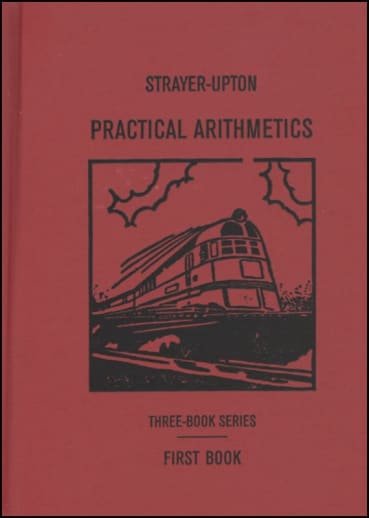Practical Arithmetics Book 1 (Gr. 3-4)
Description
Customer requests always get our attention because some of our favorite products have surfaced that way. It's easy to see why Practical Arithmetics would appeal to those wanting to keep their schooling experience basic, practical, inexpensive, and yet challenging. Originally published in 1934 and reprinted in 2007, with current book printings in 2021 and 2022 (content hasn’t changed though paper color may be a tad darker in later printings).
These palm-sized (5"x7"x1.5") hardback books
demand your respect from the beginning – they're a glimpse of life in the past lane. First
of all, explanations are kept as simple as possible requiring the student to
take only one step at a time. Then, mastery is achieved through practice
exercises (lots of them). Finally, application problems relate to real life – or at least real
life in the 1930s. One of the unique aspects of the series is the role of tests
- and there are several different types of tests. Improvement Tests provide
review; the test topics are previously studied material not included in the
most recent instruction. In other words, if instruction has been on
multiplication, the Improvement Test will cover addition and subtraction.
Problem Tests are word problems. These tests are arranged in groups known as
Groups A, B, and C, each consisting of three tests (i.e. A1, A2, A3, etc.). The
problems on Test A1 cover the same range of difficulty as those found on Tests
A2 and A3. By test A3 the student should have all problems right on the test.
Perhaps the most valuable type of test in the series is the Diagnostic Test.
These tests provide several rows of problems, each of a similar sort, with the
instructions that if a student misses an exercise in any row, they need more
practice and should return to the listed Help Pages. These tests are an
ingenious method for keeping track of a student's proficiencies and for
providing extra help if needed. All instruction, exercises, problems, and tests
are provided sequentially as a student works their way through a book. All
answers are in the back of the book.
Each 500-page book includes two years of instruction. Book 1
covers addition, subtraction, multiplication, division, and introduces
geometry, fractions, and measurement. Book 2 reviews basic operations and
covers fractions, decimals, and basic operations with each; measurement;
consumer and personal applications; percentage; and graphs. Book 3 covers
banking interest, geometry, installment buying, stocks, bonds, investments,
ratio and proportion, square roots, writing and solving equations.
Originally designed to be very practical in terms of
application, now from the vantage point of 75+ years, the word problems reflect
both timeless content (i.e. proportions of the U.S. flag) and amusingly quaint
historical perspective –
"wonderful machine is more than human" (i.e. an electric calculating
machine). Of course, any problems involving monetary costs are poignantly
archaic.
Since we're on the subject of money, I should mention that for the amazing sum of significantly less than $10 per year, this series represents a very economical math education. You'll have to be prepared to do without the amenities of workbooks, worksheets, color, manipulatives, scripted lessons, etc., but the books are surprisingly user-friendly and engaging. You certainly won't be sacrificing strength of instruction or content. I would probably start the series earlier than 3rd grade. A student completing the series should be ready for algebra, but since it means changing into another scope and sequence, it might be more comfortable to go into a pre-algebra and cover it quickly. ~ Janice/Nancie
| Product Format: | Hardcover Book |
|---|---|
| Grades: | 3-4 |
| Brand: | AB Publishing |
| Length in Inches: | 7 |
| Width in Inches: | 5 |
| Height in Inches: | 1.25 |
| Weight in Pounds: | 1.15 |

